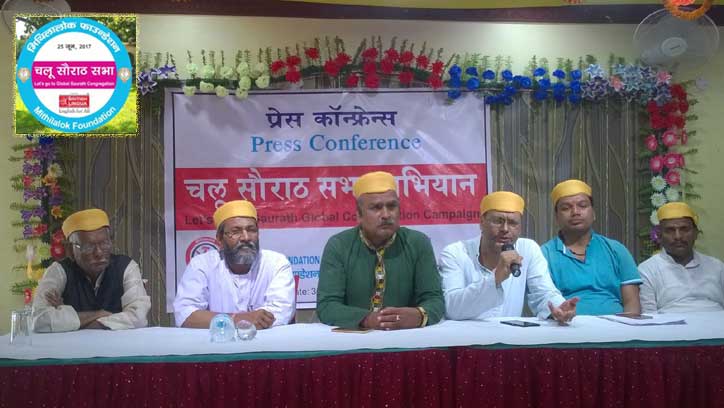 Madhubani:
Madhubani: Marriages are made in heaven, they say. But there is at least one more place where marriages are made in large numbers -- in Saurath village of Madhubani district in north Bihar.
A matchmaking festival -- Saurath Sabha -- is held here every year in the Hindu calendar months of Jyestha-Aasadh (June-end), which brings together many Brahmin families to negotiate marriages of their children.
In this unique 700-year-old festival, parents and relatives of prospective brides and grooms gather and get marriages fixed after an elaborate system of checking genealogical records by the "Panjikars" (community marriage registrars).
But, over the years, this age-old tradition has been losing its sheen in the hustle and bustle of modern life, as people have moved away to far off places, losing touch with their customs.
Now, a socio-cultural organisation, Mithilalok Foundation, has taken upon itself the task of reviving the tradition by organising a similar assembly here on June 25 with an anticipated participation of around 20,000 people from different places in the Mithila region.
"The assembly in Saurath used to have a pre-eminent position in not only settling marriages of Maithil youth but also providing a socio-cultural platform to debate and deliberate upon matters of local significance," Mithilalok Chairman Birbal Jha told IANS.
"Two decades ago, Saurath Sabha Gachhi (the orchard, where the event is held) used to attract more than 100,000 people from across the country. But this custom has been fading. We wish to bring this very interesting and important tradition back to life to facilitate marriages," he said.
Jha said that the upcoming assembly would bring together Maithils of the world and reconnect them with their roots. "People will walk from Madhubani to Saurath and gather there to participate in the age-old tradition," he said.
"On the sidelines of this campaign, we will also organise an intellectual discourse."
Saurath village was originally named as Saurastra, which meant a cultural and intellectual centre of "sau-rastra" or nations associated with the ancient king of Mithila, Janaka.
The "Swayamvara" of Janaka's daughter and revered deity Sita took place here, after which the tradition of Saurath Sabha started, according to Jha.
Recounting his experience of visiting Saurath Sabha in the late 1970s as a bride's father, 72-year-old Mahesh Thakur said: "It was like a huge village festival lasting over 10 days, depending on the length of auspicious period (according to Hindu calendar).
"People talking in the local dialect, vendors hawking rural delicacies on the sidelines of the fair, rural household items being sold here and there...a perfect village fair setting."
Prospective grooms sat on rugs and carpets, along with their fathers, uncles and Panjikars, at fixed distances. The brides' side would go around looking for a "suitable" boy. If one was found, both parties would go into a huddle to negotiate the match.
"So, girls would have an upper hand there... it was the grooms sitting and awaiting their would-be brides and not the other way round. That shows how, in Mithila culture, women have been placed on a higher pedestal since olden times," Thakur said with pride apparent in his voice.
According to him, this traditional matchmaking festival has been losing popularity among the families of the girls, because fewer "well-placed" boys are to be found there.
"Good boys are located at distant places these days, some even in foreign countries, who are unable to make it to Saurath on the occasion. Besides, their preferences have also seen a shift, as most of them now look for well-placed girls as their wives. Such girls can't be reached through Saurath Mela," said Thakur.
He, however, hailed the move to revive the dying custom of matchmaking and linking Maithils back with their roots.
 Madhubani: Marriages are made in heaven, they say. But there is at least one more place where marriages are made in large numbers -- in Saurath village of Madhubani district in north Bihar.
Madhubani: Marriages are made in heaven, they say. But there is at least one more place where marriages are made in large numbers -- in Saurath village of Madhubani district in north Bihar.